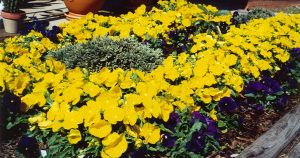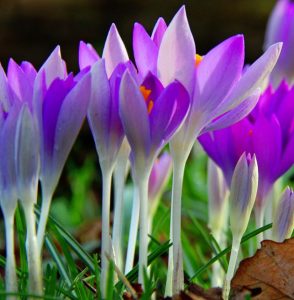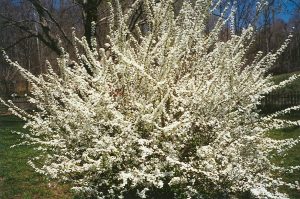Grab your spades and shovels, gardeners.
Like it or not the fall planting season is upon us. A bit of preparation now will yield big results next year, so don’t be short-sighted and put off these recommended activities.

For fall color. Unfortunately, if you haven’t been nursing your annuals along they are likely past their glory. There are a few—notably chrysanthemums and pansies—that like cooler weather and reward the grower with abundant fall color. But the vast majority of summer annuals are pretty much played out by this time each year. (You may coax some additional blossoms from healthy plants by pruning them heavily now).

The good news? Ornamental grasses are coming into their full glory right about now.Ravenna, zebra, and even pampas grasses should all be nearing full flower, which will last throughout fall and into winter.
It is okay to plant chrysanthemums now through September. The same goes for pansies (if you can find them). Both plants will provide fall color until a heavy freeze, which in some years does not arrive until December.


2-Biennials (plants which begin growing in one year, and flower in the second) can be started now. The easiest grown are hollyhocks, foxglove, and Delphinium. These can be found from plants or from seed. By far the most economical way to grow these plants is by seed, but you will need to purchase the seeds now and ensure germination before October. They will grow throughout the fall, and continue sending down roots throughout the winter months. Then, next spring they will virtually explode upwards with color. They are quite hardy and do not need winter protection. In fact, they seem to thrive on it.

3—Most perennials benefit from fall planting. Planting in the fall allows perennials to set their roots firmly in the soil during the winter months, removing the need for constant watering the following year. It also eliminates the “is it too early or too late to plant?” that comes with buying or transplanting perennials in the spring. No second guessing. Your plants will be established and ready to go.
Perennials that benefit from fall planting include large trees, dogwoods, lilacs, peonies, evergreens, hedges, and just about all flowering shrubs. A perennial planted in mid-fall will have time to adjust before the demands of winter. By next spring it should be established and need no special care beyond pruning or fertilizing. In our area, the issue seems to be availability, as many nurseries and big box stores seem to supply more perennials in spring than fall. But they can be found.

Lastly, let’s not forget our lawns. The fall can be an especially good time—with abundant rainfall and cool weather—to sow grass seeds, repair bald spots with sod, or fertilize your lawn. Those with mulching mowers should consider mulching leaves and leaving them on their lawns throughout the winter. It does much to improve the soil and protect the grass from harsh winter conditions.
If you are thinking of fall planting, I commend you. Planning ahead yields huge results. I would be happy to render advice or point you in the right direction, since there are far too many details (specific to each kind of plant) to include in any one blog posting. Just sign up here at My Garden Buddy and submit your questions.
Now, get planting. Spring will be here before you know it.
© Wade Kingston
